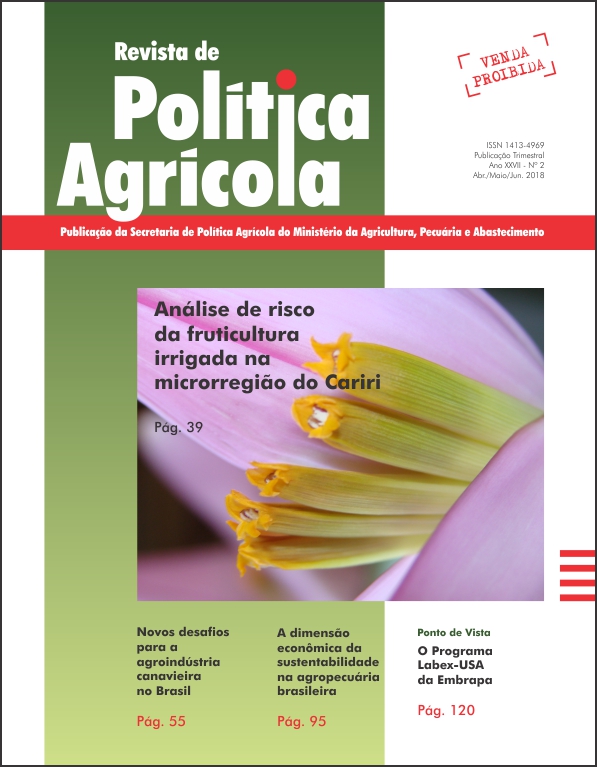Market imperfections and income concentration in agricultural production
Keywords:
performance of agricultural production, conditional FDH, generalized method of moments, fractional regressionAbstract
The Brazilian agriculture performance is assessed by means of technical efficiency measures obtained using an envelope model under free disposability of inputs – Free Disposal Hull (FDH). The production process is conditional to contextual variables potentially related to market imperfections. The production frontier is generated by a product probability measure. Production observations are aggregated by municipalities using the micro data reported in the Brazilian agricultural census of 2006. The technical efficiency measure is product oriented under variable returns to scale. The production variable is total rural income and the inputs are expenditures with land, labor and technological inputs. The covariates of the production process are credit, technical assistance, social indicator (infrastructure), environment indicator, demographic indicator and income concentration computed by the Gini index. Production performance responds favorably, at the 95% level, to the social and demographic indicators. The remaining covariates are not statistically significant at the 95% level. The intensities of marginal effects differ by region. Thus, public policies envisaging productive inclusion of small farmers require regional orientation.Downloads
Published
2018-12-26
How to Cite
Souza, G. da S. e, Gomes, E. G., & Alves, E. (2018). Market imperfections and income concentration in agricultural production. Revista De Política Agrícola, 27(2), 31. Retrieved from https://rpa.sede.embrapa.br/RPA/article/view/1410
Issue
Section
Artigos Científicos


